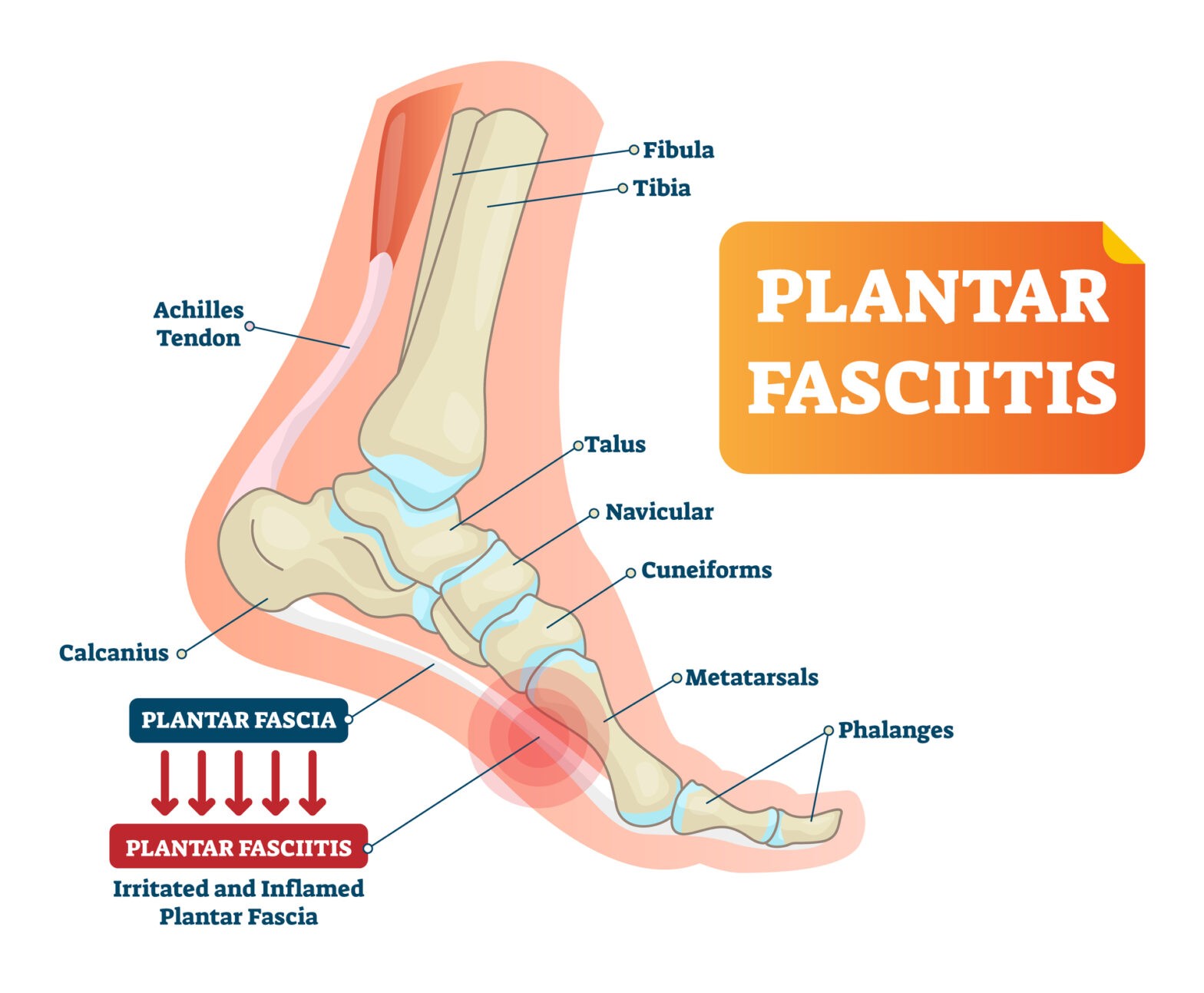“Ohhhh my aching foot. I could barely walk without a lot of pain in my heel and the arch of my foot. It was due to putting too much stress on my foot because I wore high heel shoes and had to stand in line waiting for jury duty selection for almost 2 hours as well as walking a long distance from the parking garage to the courthouse. The next morning my foot was killing me and just getting out of bed and standing up caused sharp, stabbing pain (known as “first step pain”). I’ve had this before and it was diagnosed as plantar fasciitis and it took forever to heal. This time I had 2 RST-SANEXAS neoGEN® Electric cell-Signaling Treatments (EcST) to reduce the pain associated with plantar fasciitis and the treatments worked wonders. There is HOPE!” JAF
_______________________________________________________________________________
What is plantar fasciitis (also called “Policeman Heel”)?
Plantar fasciitis is very common and more than 2 million people in the U.S. are affected by this condition Many people through- out their lifetime will be affected by this condition normally in one foot at a time due to overuse or stretching too far. The plantar fascia is a long, thin fibrous band of tissue that attaches to the heel bone and runs along the foot down to the base of the toes. It helps support the arch of the foot and is important for absorbing shock when walking, running, standing for long periods of time, and/or playing sports, etc. Tension or stress on the fascia causes small tears resulting in irritation and inflammation of the band of tissue. The longer the symptoms and more severe the pain can affect how long the healing process can take. There are some simple in-home treatments that can be done to help but they may not resolve the pain as quickly as other treatments. It can take up to 10 months before the condition improves.
Treatments for plantar fasciitis
In-Home Treatments
- Exercises – Plantar fasciitis is worsened by tight calf and feet muscles. Stretching exercises and massaging techniques of the calf muscles and heel can be done and repeated over 20 times per day to help relieve the pain.
- Ice – Rolling your foot over an ice cold water bottle for at least 20 minutes 3-4 times per day helps. Even rolling your foot over a tennis ball can help stretch the plantar fascia.0
- Supportive shoes – Wearing shoes or orthotics with thick soles and extra cushioning to support the heel can help reduce pain.
- Rest and over-the-counter medication – Changing your activity and taking over-the-counter medications like aspirin or ibu profen; however, it is recommended to not take medication for more than 10 days.
In-Clinic Treatments
- RST-SANEXAS Electric cell-Signaling Treatments (EcST) – Electric signaling energy waves help relieve pain, increase circulation, and improve muscular function. The RST-SANEXAS neoGEN® Electric cell-Signaling Technology (EcST) provides varying energy frequencies and dwell times to achieve different physiological effects. This technology enhances the cell to cell communication producing an increase in the recovery process and depending on the length of time of the condition, it can impact positive patient outcomes. A treatment using the RST-SANEXAS neoGEN® device is a excellent way to accelerate the physical recovery process giving relief from pain associated with plantar fasciitis and other acute and chronic long-term (intractable) conditions while also increasing circulation and improving muscular rehabilitation.
Visit https://www.rstsanexas.com/science or https://www.rstsanexas.com/neogen

